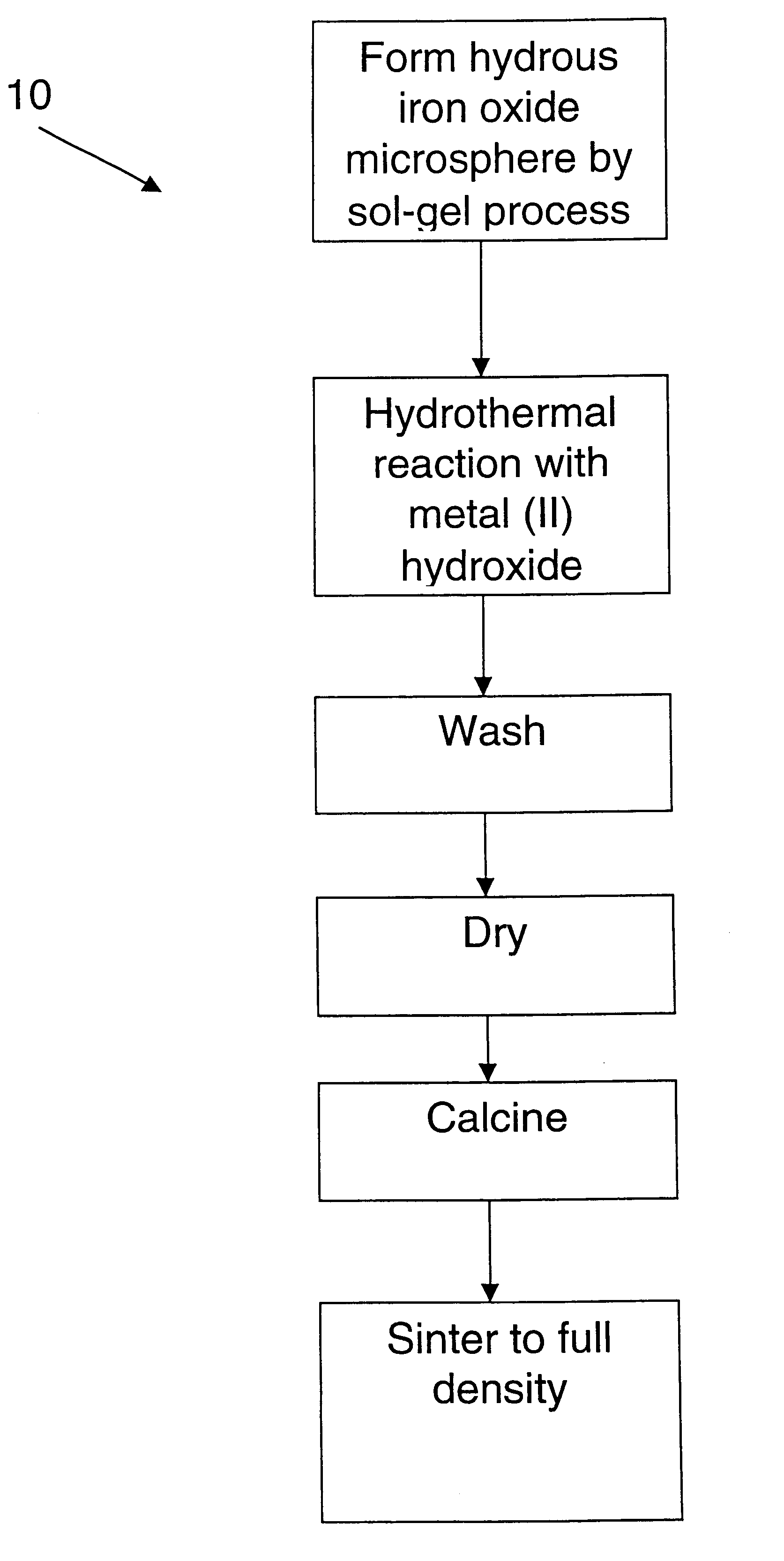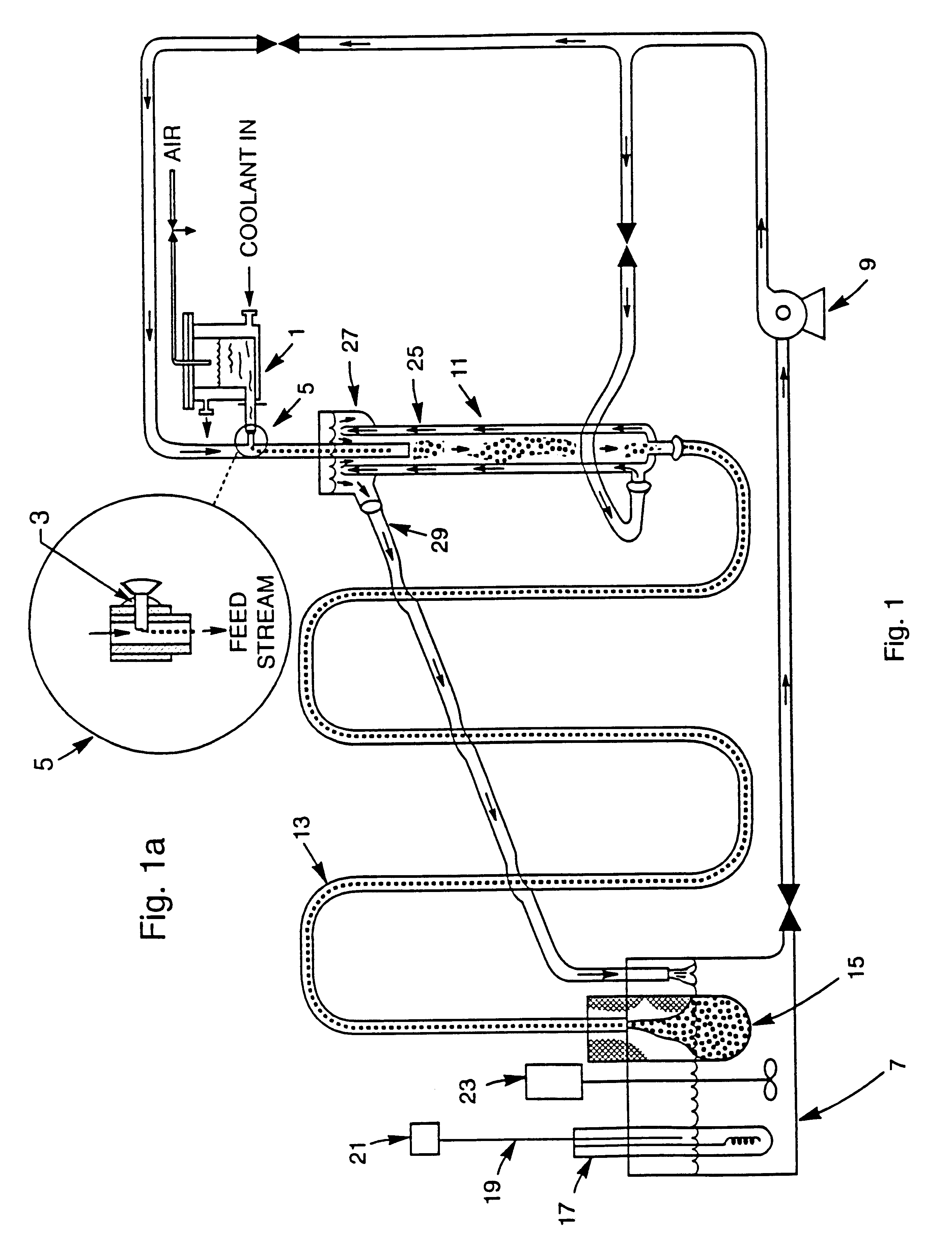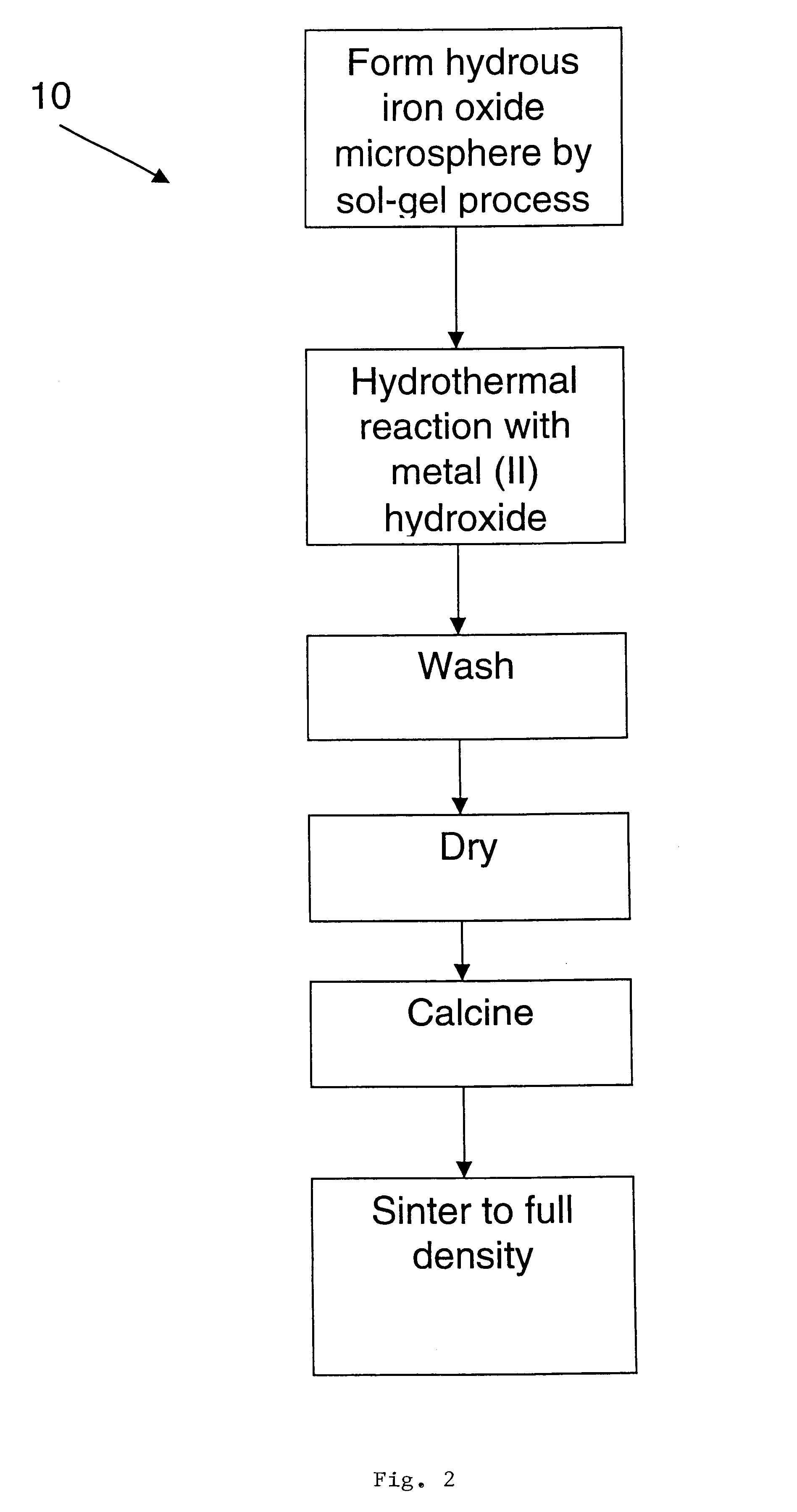Method for preparing spherical ferrite beads and use thereof
a ferrite and spherical technology, applied in the field of preparing spherical ferrite beads, can solve the problems of difficult or impossible to fabricate beads using the dicing and tumbling methods commonly employed for yig beads, and is clear impractical to genera
- Summary
- Abstract
- Description
- Claims
- Application Information
AI Technical Summary
Benefits of technology
Problems solved by technology
Method used
Image
Examples
example 2
The hydrous iron oxide gel beads from the previous Example 1 were about 300 .mu.m. These beads were suspended in a stainless steel mesh basket and placed into a Parr reactor in a solution of 4 M Ba (OH).sub.2. The beads were allowed to equilibrate overnight in this solution. Then the reactor was heated to 200.degree. C. and pressurized to prevent boiling of the solution and the sample was held for 4 hours. Upon removal, the beads had lost their integrity and formed a gelatinous mass. Based on this result, a lower concentration of Ba hydroxide was indicated.
example 3
The hydrous iron oxide gel beads from Example 1 were about 300 .mu.m. These beads were suspended in a stainless steel mesh basket and placed into a Parr reactor in a solution of 0.5 M Ba(OH).sub.2. The beads were allowed to equilibrate overnight in this solution. Then the reactor was heated to 200.degree. C. and pressurized to prevent boiling of the solution and the sample was held for 4 hours. Upon removal, the beads were intact and had changed color (red to dark brown). The beads were air dried and a small sample was heated in air at 10.degree. C. / min to 1200.degree. C. The beads, which were still intact, were then crushed and examined by X-ray diffraction, which determined that they were substantially single-phase BaFe.sub.12 O.sub.19.
example 4
Hydrous iron oxide gel beads prepared according to Example 1 were suspended in a stainless steel mesh basket and placed into a Parr reactor in a solution of 0.5 M Sr(OH).sub.2. As before, the beads were allowed to equilibrate in this solution overnight. The reactor was heated to 200.degree. C. and the sample was held for 4 hours. Upon removal, the beads were intact and had changed color (red to black). The beads were dried in air and then heated at 10.degree. C. / min to 1200.degree. C. The beads, which were still intact, were then crushed and examined by X-ray diffraction, which determined that they were substantially single-phase SrFe.sub.12 O.sub.19. SEM examination indicated that the beads were substantially dense.
It will be understood that the inventive process may be further modified by the addition of various dopants. As described by J. Nicholas ("Microwave Ferrites" in Ferromagnetic Materials, Vol. 2, pp. 291-4, North Holland Publishing Co., 1980, incorporated herein by refere...
PUM
| Property | Measurement | Unit |
|---|---|---|
| temperature | aaaaa | aaaaa |
| temperature | aaaaa | aaaaa |
| size | aaaaa | aaaaa |
Abstract
Description
Claims
Application Information
 Login to View More
Login to View More - R&D
- Intellectual Property
- Life Sciences
- Materials
- Tech Scout
- Unparalleled Data Quality
- Higher Quality Content
- 60% Fewer Hallucinations
Browse by: Latest US Patents, China's latest patents, Technical Efficacy Thesaurus, Application Domain, Technology Topic, Popular Technical Reports.
© 2025 PatSnap. All rights reserved.Legal|Privacy policy|Modern Slavery Act Transparency Statement|Sitemap|About US| Contact US: help@patsnap.com



